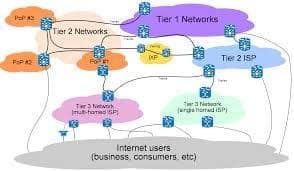Recently, the Supreme Court handed down an important decision in ABC v. Aereo Inc. The case itself was a copyright dispute, however, the same also highlighted the interesting interplay between copyrights and patents that many companies may be unaware of.
Briefly, the Supreme Court pronounced that Aereo violated broadcasters’ copyrights by selling programming online without paying licensing fees, and said it did so regardless of the nature of the cloud technology that it was using. Specifically, Aereo collects signals “over-the-air” through antennas, stores the resulting video on servers, and delivers the live or recorded programs to customers via the internet.
Instead of fully protecting the burgeoning computer-storage industry, the court took care to sidestep the issue of how copyright laws affect services such as Amazon.com Inc. and Dropbox Inc. when users download videos and documents.
The ruling said that questions involving cloud computing — the business of storing content on remote servers and delivering it over the Internet — should “await a case in which they are squarely presented.” That leaves technology companies with few clues to guess whether their services would pass legal muster if challenged. This move by the court however gives ample breathing room for businesses to fine-tune their processes in order to ensure that should the time arise that when cloud computing is brought to the foreground, the legal questions would be easily dispensed with.
Not surprisingly though, with the lack of a definite ruling, several companies were anxious about what the court would rule. Well established providers such as Amazon and Dropbox use similar cloud-based technology to provide content to their subscribers. An adverse ruling here would spell disaster for the likes of them. Not only do these companies rely on said system, but for the court to rule against the cloud computing technology would set back the industry as a whole.
However, due to the court’s exercise of judicial restraint, the court’s decision was narrow and largely limited to “where the user … pays primarily for something other than the transmission of copyrighted works, such as the remote storage of a content.”
Observers and other legal luminaries surmise that digital content delivery services such as cloud-based storage and digital video recorder (DVR) technologies should not be directly affected. This is a far cry from the fears that most had envisioned. Opinions speculate that the court held back on a definite ruling over the cloud computing technology as it found that there would be too many far-reaching implications that might not necessarily be connected with the lis mota of the principal case.
Interestingly, however, this case also highlights the necessary but often overlooked link between patent and other IP rights. Many cloud computing companies protect their distribution platforms via patents, which have long been seen as giants among the various intellectual property rights. Seldom do they think about the ramifications of other areas of intellectual property, such as copyright. Aereo, for example, has been actively seeking patent protection, filing over 14 patent applications since 2010.
Clearly, they were aware of the utility of IP rights in one arena, but have been caught unaware in another. Hopefully, this case highlights not only the need for patent protection but the need for awareness of the full gamut of IP protection. The ever-changing world has once again seen the integral problem when the law cannot keep up with the technology or business it seeks to regulate. This however is not entirely on the Supreme Court since they are only tasked with the interpretation of the law. Congress needs to bolster its efforts to fully employ the IP law.


